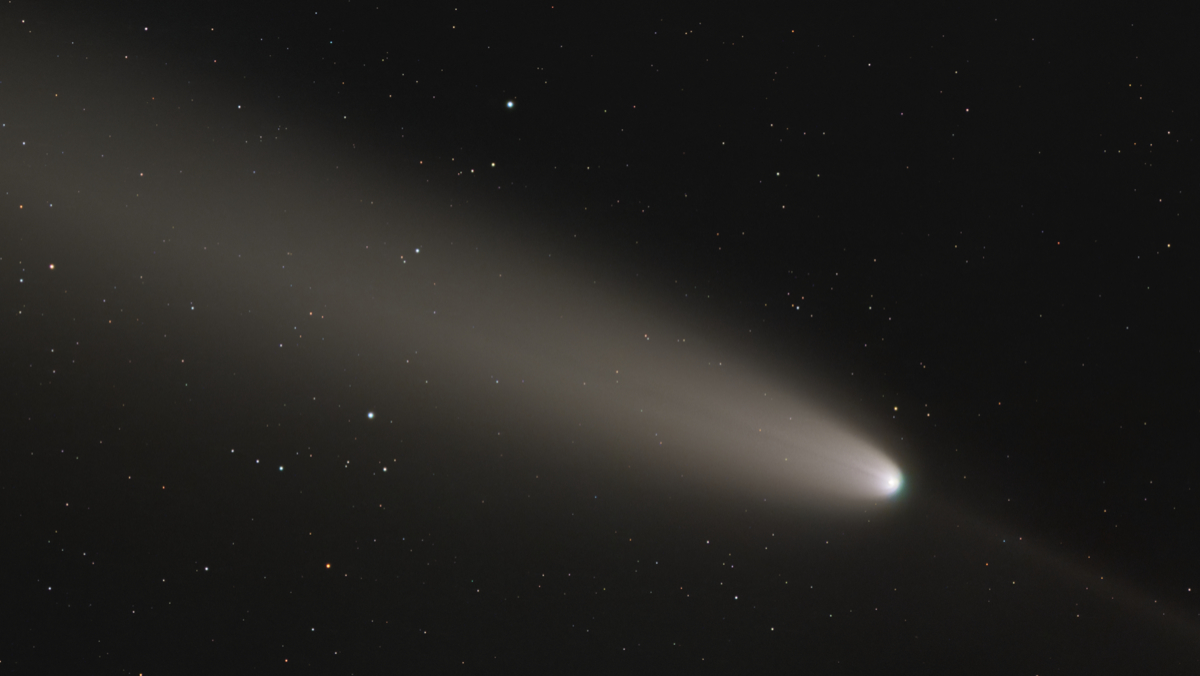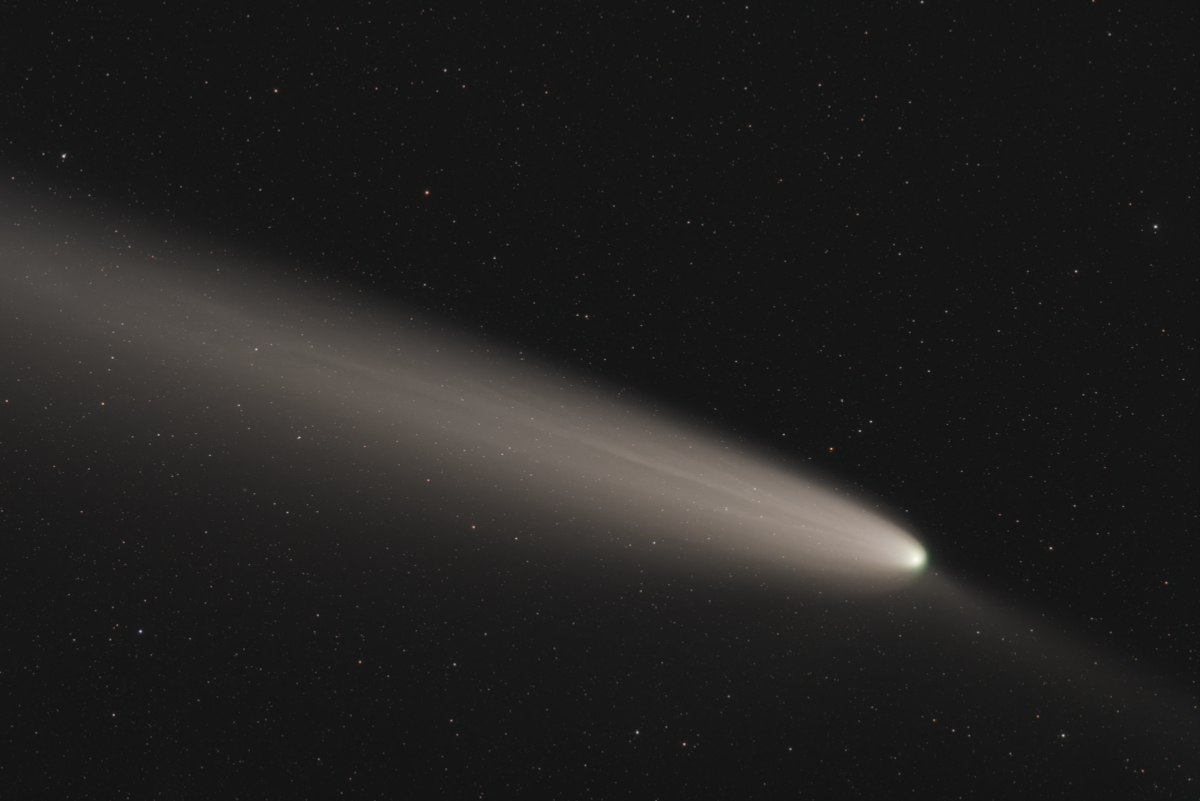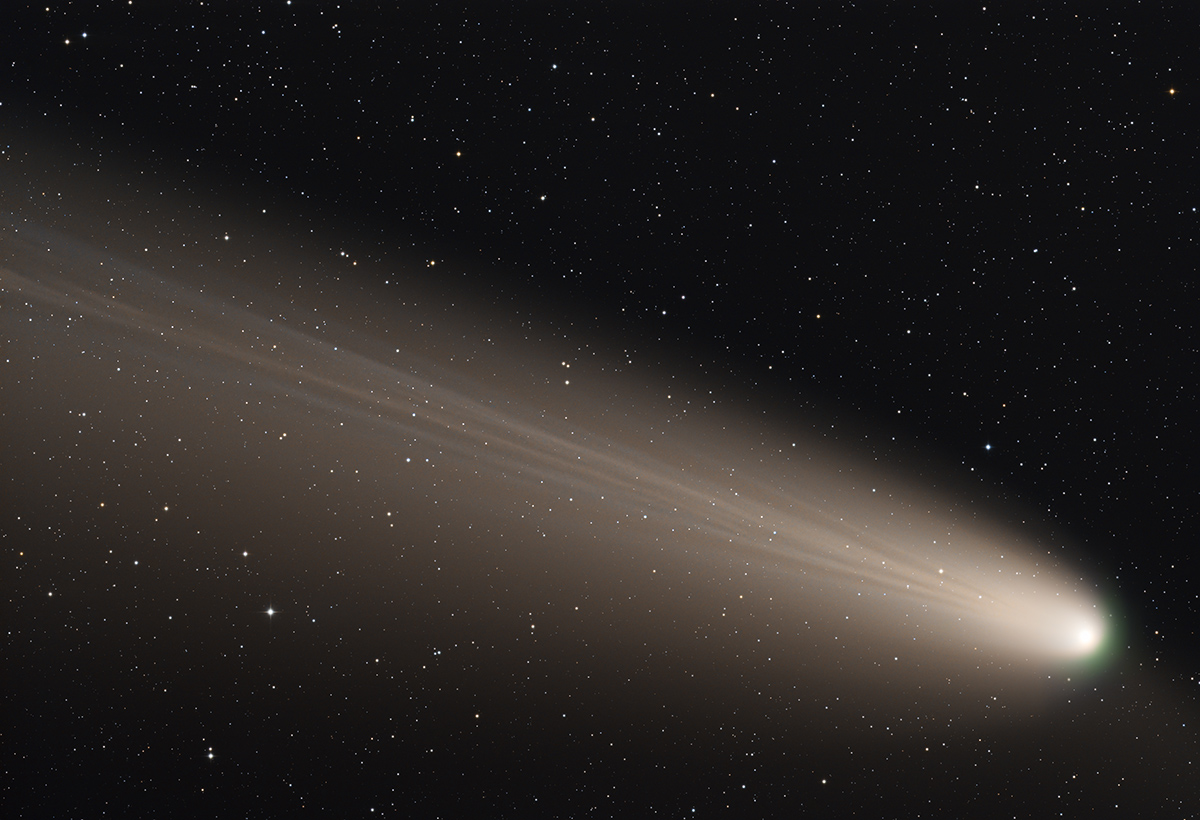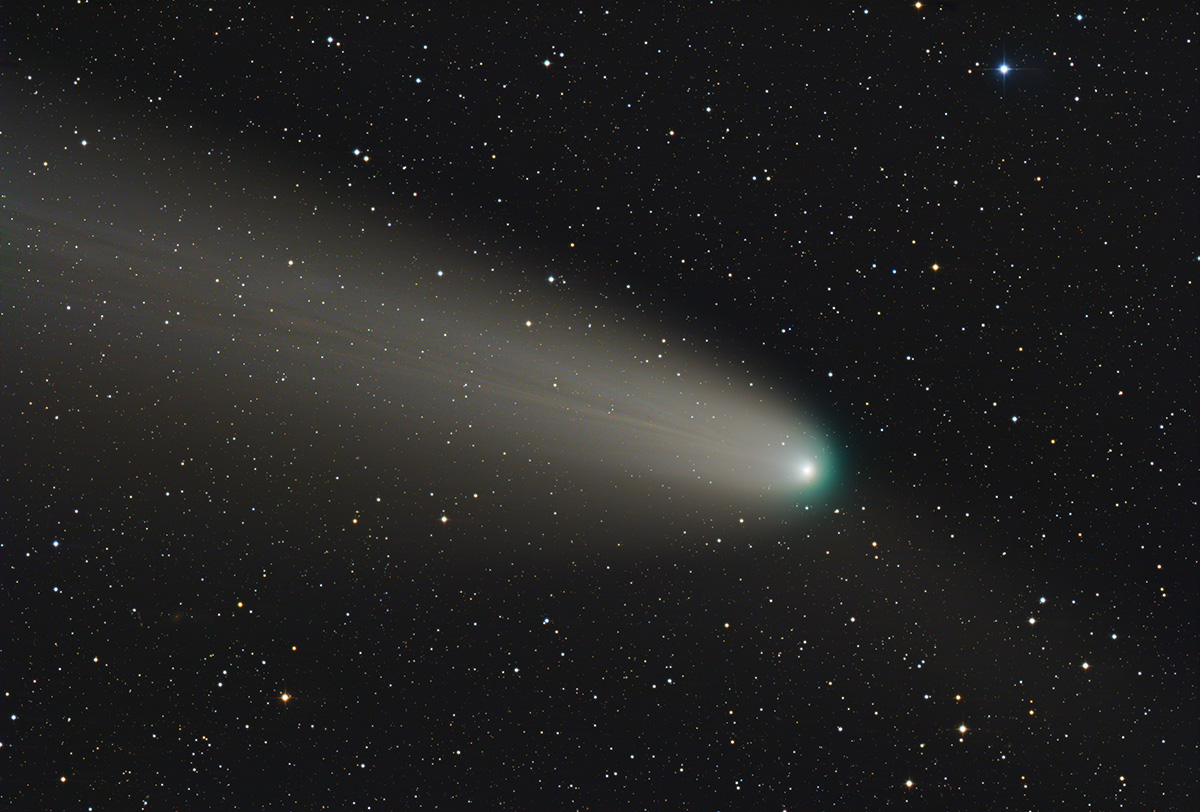Bigger, uncroped version / Größere, unbeschnittene Version (8984 x 6079 pixel)

[back] 4x Comet C/2023 A3 (Tsuchishan-ATLAS), October 16th..23rd 2024
October 16th 2024 at Kiripotib/Namibia (f=530 mm, full frame
sensor, slightly cropped)
Bigger,
uncroped version / Größere, unbeschnittene Version (8984
x 6079 pixel)

|
(c) 2024 All astro photo images are copyrighted. They may not be used or reproduced without explicit written permission from the authors. |
|
300" |
|
October
20th 2024 at Kiripotib/Namibia (f=530 mm, full frame sensor, slightly cropped)
Bigger,
uncroped version / Größere, unbeschnittene Version (9357
x 6269 pixel)

|
(c) 2024 All astro photo images are copyrighted. They may not be used or reproduced without explicit written permission from the authors. |
|
300" |
|
October
21st 2024 at Skinakas/Crete (f=1816 mm, full frame sensor)
Bigger version / Größere Version (5769
x 3944 pixel)

|
(c) 2024 All astro photo images are copyrighted. They may not be used or reproduced without explicit written permission from the authors. |
|
300" |
|
October
23rd 2024 at at Skinakas/Crete (f=1816 mm, full frame sensor)
Bigger version / Größere Version (5939
x 4068 pixel)

|
(c) 2024 All astro photo images are copyrighted. They may not be used or reproduced without explicit written permission from the authors. |
|
300" |
|
About this Images / Über dieses Bilder
Image 1 and 2 (Kiripotib/Namibia):
| Camera: | Moravian C3-PRO-61000 Mono CMOS |
| Image Type, Orientation: | L-RGB composite, North is at 12:00 |
| Exposure time/date: | Image 1 (October 16th 2024): L: 14x30 sec., R,G,B: 6x30s
(0:16h total) Image 2 (October 20th 2024): L: 19x30 sec., R,G,B: 8x30s (0:22h total) |
| Location: | Capella Observatory South at Kiripotib Astro Farm, Namibia |
| Filter: | Astronomik Deep-Sky Deep-Sky RGB Filter on Moravian EFW-3L-9-II External Filter Wheel |
| Instrument: | "Callisto", a Takahashi FSQ 106N, 530mm focal length, 106mm aperture, f/5 on modified Losmandy G11 (high res encoders with OnStepX) |
| Photographer: | Rainer Raupach, Josef Pöpsel, Frank Sackenheim |
Image 3 and 4 (Crete/Greece):
| Camera: | Omegon veTEC410c |
| Image Type, Orientation: | RGB Composite, North is at 12:00 |
| Exposure time/date: | Image 1 (October 21st 2024): 33x30 sec. (0:16h total) Image 2 (October 23rd 2024): 97x10sec. (0:15h total) |
|
Location: |
Skinakas Observatory at Crete, Greece, remote-controlled from Bad Arolsen/Germany |
|
Filter: |
RGB: Internal Bayer-Matrix |
|
Instrument: |
Ganymed 60cm-Hypergraph in primary focus (f=1815.9 mm) |
|
Photographer: |
Josef Pöpsel, Frank Sackenheim, Stefan Binnewies |
|
Remarks: |
The images above were all taken just under four weeks after the comet's perihelion, meaning it was visible in the evening sky at twilight before it set. Because of its orbit, the comet was able to be observed from both the southern and northern hemispheres. The series of images shows the
development of the comet over several days. The expansion of the opposite
tail, which was still quite narrow on 16.10.2024 and fanned out as it
progressed, is striking. A shot taken well before the closest point to the Sun can be found here. |
|
Bemerkungen: |
Die Bilder oben entstanden allesamt kanpp vier Wochen nach dem Perihel des Kometen, er war also am Abendhimmel in der Dämmerung zu sehen, bevor er unterging. Aufgrund seiner Bahn war es möglich, den Kometen sowohl von der Süd- als auch von der Nordhalbkugel zu beobachten. Die Bilderserie zeigt die Entwicklung des Kometen über
mehrere Tage. Auffällig ist die Ausdehnung des Gegenschweifs, der am
16.10.2024 noch recht schmal war, und im weiteren Verlauf aufgefächert
wurde. Eine Aufnahme deutlich vor dem sonnennächsten Punkt ist hier zu finden. |
Back to the Comet Overview / Zurück zur Kometen-Übersichtsseite